
The Xiahai City God Temple was founded in 1859 and it is an important center of faith for the people in Dadaocheng. In addition to the main worship of Xiahai City God, the main deity in the side hall is Goddess Cheng Huang, and the authority of side halls are almost female deities, so it has become the spiritual support for local women.
In the past, women in Dadaocheng used to go to the Xiahai City God Temple to pray for the blessing from the Goddess Cheng Huang for harmony and happiness. Since then, whenever a woman gets her wishes, she will offer a pair of embroidered shoes for her gratitude. Nowadays, husband and wife have the equal status in marriage, therefore a pair of embroidered shoes is also a symbol of blessing for the harmonious and happy family relationship.

Going out into the World: Women’s Wonderful Lives in Dadaocheng
In 1860, when the port of Tamsui was opened, Dadaocheng became an important distribution center for tea processing and trade, and was filled with tea (foreign) houses, Chinese herbal medicine houses, local goods shops, and cloth shops, creating a long period of prosperity in Dadaocheng, where gradually became the most important commercial area in Northern Taiwan. At that time, tea pickers, which can be called the pioneer of women’s occupation, have emerged. In the 1920s, the Taiwan Governor’s Office (the highest authority institution in Taiwan during the Japanese colonial period) implemented the policy of abolishing foot binding and promoting women’s education. That prompted women to gradually enter the workplace, and such professions as geidan (female performer), waitress, midwife, female doctor, proprietress, etc. have emerged. These female roles of the times make their lives wonderful in Dadaocheng.
The Xiahai City God Temple was founded in 1859 and it is an important center of faith for the people in Dadaocheng. In addition to the main worship of Xiahai City God, the main deity in the side hall is Goddess Cheng Huang, and the authority of side halls are almost female deities, so it has become the spiritual support for local women.
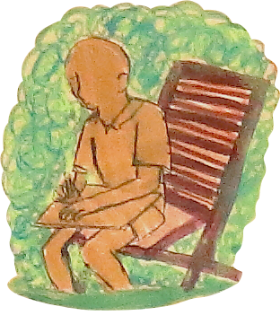
In 1898, the Japanese government began to implement the public prostitution system in Taiwan. The Wenmeng Building was the most famous public prostitution house located around Gui Sui Street in Dadaocheng.",

The tea house was built in 1934 including four functions as tea house, tea roasting factory, warehouse, and the owner's residence for tea producers gathering.
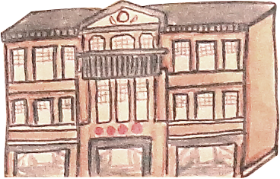
The Xiahai City God Temple was founded in 1859 and it is an important center of faith for the people in Dadaocheng. In addition to the main worship of Xiahai City God, the main deity in the side hall is Goddess Cheng Huang, and the authority of side halls are almost female deities, so it has become the spiritual support for local women.
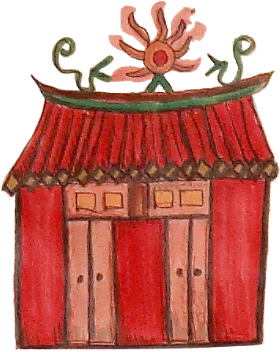
In 1916, in view of the unequal education opportunities for girls in Taiwan, the Spanish Catholic priest, Father Gennie Mendes, purchased the land to build the first girls' high school established by the Catholic Church in Taiwan. Although it was a church school, it did not emphasize the religious curriculum, but promoted the purpose of higher education for local girls to be a good wife and mother with useful knowledge and skills for daily life. In addition to ordinary high school courses, it offers courses about arts, embroidery, music, foreign language, and cooking. The school recruited Taiwanese and Japanese students.
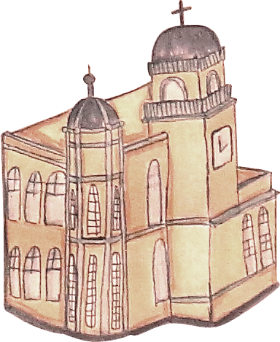
In 1921, Dr. Wei-Shui Jiang founded the Taiwan Culture Association in the Daan Hospital. Under the influence of traditional patriarchy, Taiwanese women were oppressed and not treated reasonably and equally. Differ from the tradition, the Taiwan Culture Association recruited female members at the time.
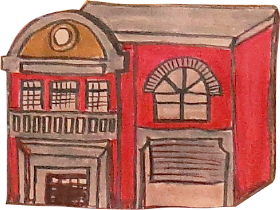
The Yongle Fabric Market was originally a market selling food and snacks, because it was close to the Dadaocheng wharf, Japanese merchants used the area as a wholesale center for fabric imports. At that time, more than half of the fabric merchants in Taiwan gathered in Dadaocheng.

In the 1930s, full of wealthy merchants gathered in Dadaocheng, so there were many large-scale restaurants, and the Wan Li Hong Public Canteen was one of them. The canteen was renamed as the Black Beauty Restaurant and named as "All Beauty" in English. It is interesting that "All" pronounce like "black" in Taiwanese Minnan.
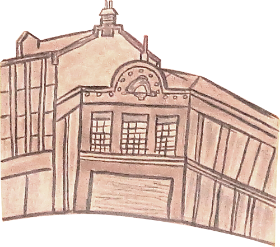
The department store was opened in 1970 with an escalator to attract people and brought lots of business in Dadaocheng.

It was originally an education division for girls in 1898. When the number of students increased year by year, it became the Dadaocheng Girls' Elementary School in 1911. Nearly 700 graduates were educated in 1922. It was the first public school for girls in Taipei and now is known as Penglai Elementary School.

Considering lack of specialized obstetricians and gynecologists in Dadaocheng, Dr. Jing-Yuan Kao, a pioneer of obstetrics and gynecology in Taiwan, opened the first private obstetrics and gynecology hospital, the Gao Gynecology and Obstetrics, at Liuguan Street in Dadaocheng (now is the intersection of Tacheng Street and Nanjing West Road) in 1920.

Herstories in Yilan’s Old Town
Yilan City has been the seat of the county government as well as the political, cultural, and educational center since the Qing Dynasty. Women have left their footprints in the history.
The Shrine to Virtue and Piety, the Qichang Hall, and the Human Rights Monument are in witness of the regulation and suppression of women at that time. The Cimin Temple and the Nanxing Temple reveal women's ability to manage religious affairs and also expose the close relationship between women and folk beliefs. The streets and alleys are where women from the lower class being prostitute to earn living fees. The girls’ elementary schools and senior high schools empowered girls. It was common to see female students and teachers, and the clinics opened by female doctors studying abroad from Japan were on the main street, and modern nursing staff appeared.
- Cimin Temple
- The former site of Qichang Hall
- Shrine to Virtue and Piety
- Zhonghe Hall
- The former site of Yilan Hospital
- The former site of Kaihua building
- The former site of Weiren Hospital
- Nanxing Temple
- Human Rights Monument
- The former site of Yilan Girls’ Elementary School
- The former site of Lan-Yang Girls’ Senior High School
The Cimin Temple was founded in 1932 as the first earth mother temple in Yilan. The founder, Ms. Ajin Yang Lee, was adopted as a foster daughter after her birth. Her marriage was tough and she decided to be a vegetarian with self-cultivation. One day, she dreamed the earth mother, so she left her husband and moved into a small guardhouse on the Yilan River side with her daughter. She dedicated herself to the earth mother. The statue of the earth mother was placed in other temples at the beginning, and then moved to the current site around 1953 by the rich women and believers who donated money to buy the land.

During the Qing Dynasty, there were strict regulations for women to become a nun, so in order to accommodate unmarried, widowed, or disabled women, the Yilan gentry funded the vegetarian hall as a home for women of the family to cultivate their morals and to live in peace. The Qichang Hall was founded in 1825 during the time.

During the Qing Dynasty, there were strict regulations for women to become a nun, so in order to accommodate unmarried, widowed, or disabled women, the Yilan gentry funded the vegetarian hall as a home for women of the family to cultivate their morals and to live in peace. The Qichang Hall was founded in 1825 during the time.

There are nearly 20 family temples in Yilan, most of them are male dominated, except the Zhonghe Hall is tied for men and women, which is rare in the traditional society. The hall was built in 1921 by Chao-Zong Zhong, son of Ms. Chiu-Kin Ho (a widow stayed in her husband's house to marry her later husband). Ms. Ho assisted her husband and son to become the largest rice merchant in Yilan. She involved in the purchase of land and property in Jiaoxi, Toucheng, and Dongshan. She often took the lead in making deeds of trust and property rights. A hundred years ago, women did not leave their homes and had no rights in property ownership. She was the forefront of the times.

The Yilan Hospital was established in 1897 and was the largest western-style medical institution and the birthplace of modern nursing staff during the Japanese colonial period in Yilan. In the early days of its establishment, nurses were from Japan. Since 1924, the Yilan Hospital established a nursing school by the law to train nurses locally. After the world war, Japanese nursing staff were withdrawn and the hospital held three nursing training courses in need. The hospital is now the Xinmin Hospital of the Yang Ming University.

During the Japanese colonial period, there were various types of female porn workers such as geisha, courtesans, and prostitutes in Yilan. Taiwanese geisha who were good at singing were commonly called geidan. At that time, the highest class restaurant was the Kaihua building located on the moat and was mainly frequented by Japanese to be accompanied with geisha. The Kaihua building was originally a two-level wooden building, which has been demolished and remodeled as the Christian Yilan Church.

During the Japanese colonial period, women in Taiwan had fewer opportunities for education, and it was even more difficult for them to study abroad in Japan. Dr. Pi Lin broke constraints to work at the National Taiwan University Hospital after completing her studies in Japan, and returned to the Yilan Hospital being a gynecologist then opened the Weiren Hospital. The Weiren Hospital was the first gynecological hospital in Yilan to be headed by a female doctor, providing medical care for local women. The old building is still in good condition and is now known as the Jin Gu Yuan Silver House.
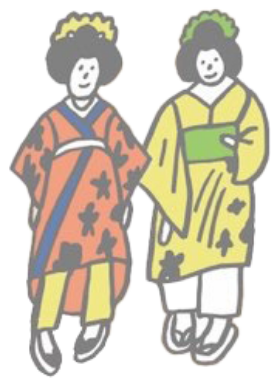
The Nanxing Temple is the earliest and the only temple of the Goddess of Child Birth in Yilan over 100 years. The temple is also dedicated to the Guanyin (the Bodhisattva of Compassion) and the God of Good Fortune, but the Goddess of Child Birth is the authority
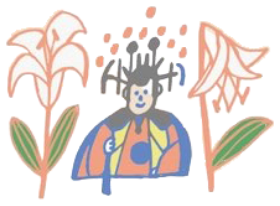
During the Qing Dynasty, it was common for the Han Chinese to have concubines and maidservants, especially most of whom were commonly known as "tsa-bóo-kán" imprisoned for her life. The government officers repeatedly abolished this corrupt custom, even imposed the penalty of rods, still could not forbidden the custom.

During the early years of the Japanese colonial period, it was promoting all boys and girls to be educated, but only a few girls could go to school because of the custom of foot-binding and gender equality. Until 1918, the Yilan Girls' Elementary School, the first school in Yilan to recruit girls, was established. At that time, the goal of education was to develop girls' skills in tailoring and domestic work. The school was renamed as the National Yilan Elementary School when the history of the school only for girls ended in 1996.

During the Japanese colonial period, it was not easily accessible to other places from Yilan. The girls who wanted to study in senior high schools had to travel to Taipei and Keelung. Due to the economic condition and the stereotypes of giving preference to sons over daughters, only a very few girls from the families of gentry were able to fulfill their wishes. After ten years of campaigning by the local people, the Lan-Yang Girls’ Senior High School was established in 1938. After the world war, the school was renamed as the Taiwan Provincial Lan-Yang Girls’ Senior High School, and now is the National Lan-Yang Girls' Senior High School. The gate of the school is the only founding facility of the school, and was declared a county-designated historical site in 2011.
